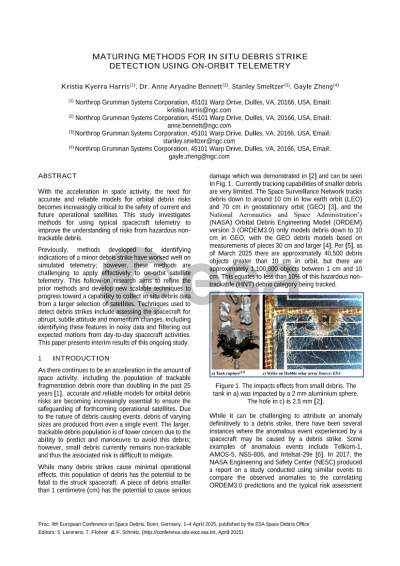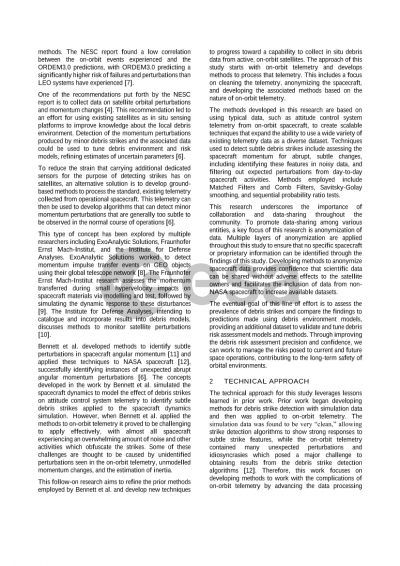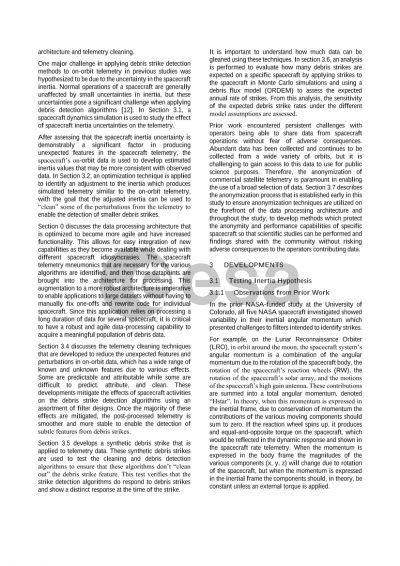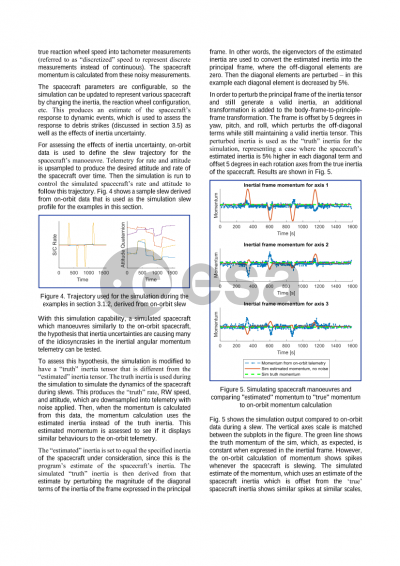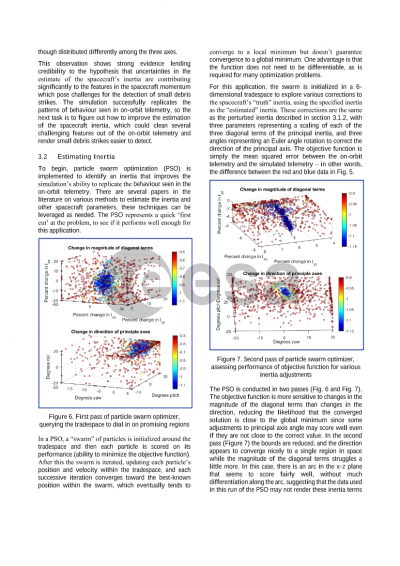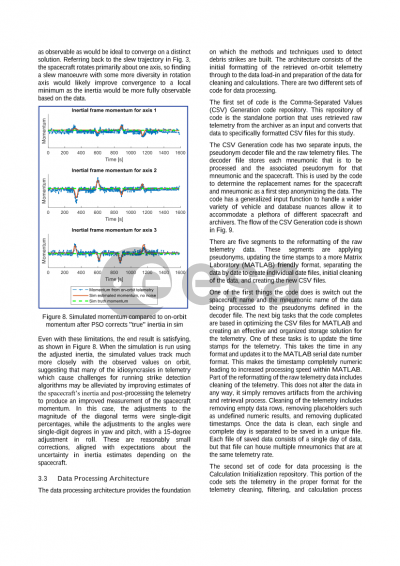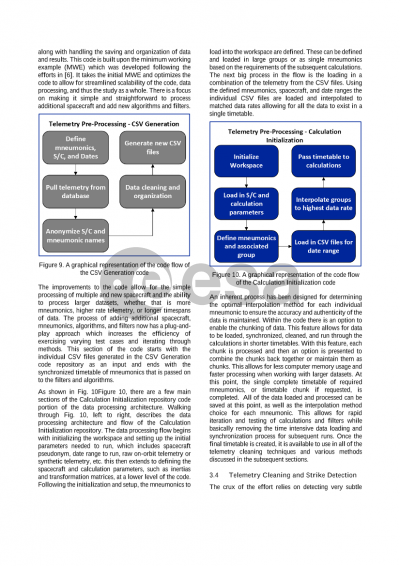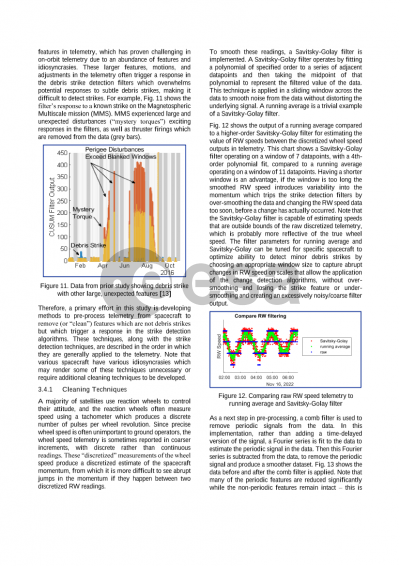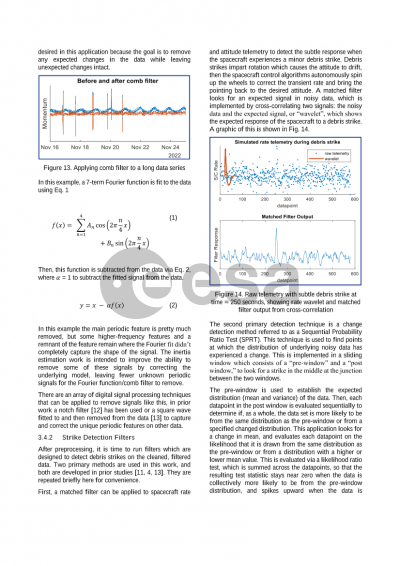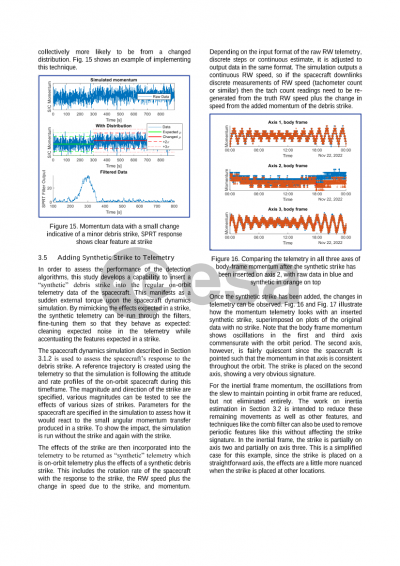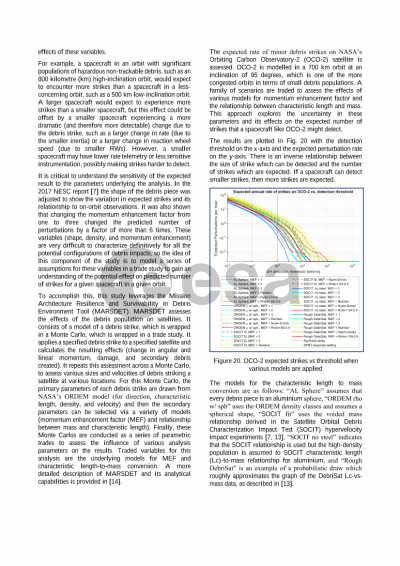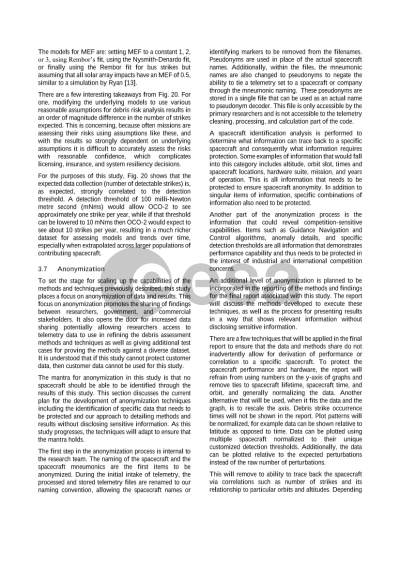Document details
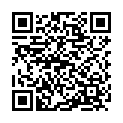
Abstract
As there continues to be an acceleration in the amount of space activity, the need for accurate and reliable models for orbital debris risks become increasingly critical to ensure the safety of current and future operational satellites. This study is directed toward improving understanding of the risks from hazardous non-trackable (HNT) debris through investigation of methods to extract in situ HNT data from typical spacecraft telemetry. HNT debris is of particular interest due to its nature as debris that is both large enough to cause mission critical damage while simultaneously being too small to track. While there are excellent models to assess the risks from HNT debris, the application of these models is sometimes uncertain and can lead to significant error bars on the quantified risk from HNT debris. Previously, the methods of identifying indications of a minor debris strike have worked well on simulated telemetry; however, these methods are challenging to apply effectively to on-orbit telemetry from active satellites. This follow-on research, funded via NASA grant, aims to refine the prior methods and develop new ones to progress toward a capability to collect in situ debris data from a larger selection of satellites. This paper will present interim results from this ongoing study.
The methods developed in this research are based on using typical data, such as attitude control system telemetry from on-orbit spacecraft, to create scalable techniques that expand the ability to use a wide variety of existing telemetry data as a diverse dataset. Techniques used to detect subtle debris strikes include assessing the spacecraft momentum for abrupt, subtle changes including identifying these features in noisy data and filtering out expected perturbations from day-to-day spacecraft activities. Methods employed include matched and band-pass filters, sovitsky-golay smoothing, Kalman filtering, and sequential probability ratio tests.
This research underscores the importance of collaboration and data-sharing throughout the community. To promote data-sharing among various entities, a key focus of this research is anonymization of data. Multiple layers of anonymization are applied throughout this study to ensure that no specific spacecraft or proprietary information can be identified through the findings of this study. Developing methods to anonymize spacecraft data provides confidence that data can be shared without adverse effects to the satellite owners and facilitates the inclusion of data from non-NASA spacecraft to increase the amount of available data.
The goal of this line of effort is to assess the prevalence of debris strikes and compare the findings to predictions made using debris environment models, providing an additional dataset to validate and tune debris risk assessment models and methods. Through improving the debris risk assessment precision and confidence, we can work to manage the risks posed to current and future space operations, contributing to the long-term sustainability of orbital environments.
Preview
